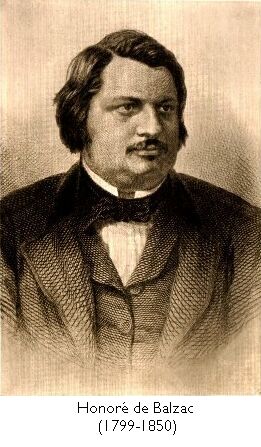
Have been munching on Balzac's Omelette all day. This fun little book by Anka Muhlstein takes a look at the way Honoré de Balzac used food in his writing to give the reader a glimpse of a character's character and to show how the different classes approached meals, what they ate, and how the food was prepared and presented. The misers in his stories are depicted as those who 'eat to live, not live to eat.'
A very un-French attitude, wouldn't you agree?
Honoré de Balzac had a strange relationship with food himself. While working, sometimes 18 hours a day, he barely ate at all but kept himself going with strong coffee and fruit. When a writing project was finished, though, he would head out to one of the finer restaurants in Paris and gorge himself on oysters, chicken, beef, pears, grapes, cheese and lots and lots of wine. He would then send the bill to his publisher.
Balzac was living and writing and eating in Paris during some of the time that David McCullough wrote about in The Greater Journey. Balzac came to Paris from Tours with his family when he was 15. That was in 1814 and he died there in 1850. He is buried in Le Père Lachaise Cemetery in Paris.
Once he was imprisoned for a few days for shirking his duty to serve in the National Guard. Rather than suffer the indignities of prison food he ordered in feasts from Véfour, one of the city's most expensive restaurateurs. The meals were replete with linens and fine glassware and silver. On his release, he wrote, he wanted to leave behind memories of "every tradition in the art of fine living."
I like his style.
Belle, this sounds fascinating. Thank you so much for reviewing it!
ReplyDeleteI thought it was great. I love to read about writers and food.
Delete